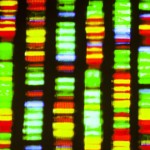“This bioassay could give us a method that is easy to adopt in the clinical setting to test a patient’s blood and determine if a therapy is effective long before the [current] months-long period it takes to observe if a therapy is leading to improvement,” he says.
Personalized Rheumatology Care
As he and his research team continue to work to determine more about how inflammatory diseases may be understood at the molecular level through dysregulated gene expression, Dr. Ho sees several important ramifications of this work. He notes that:
- Testing for dysregulated PTPN22 will help identify patients at risk for RA who haven’t developed signs found in current laboratory approaches, such as testing positive for anti-cyclic citrullinated peptide antibody;
- Uncovering additional genes that are abnormally expressed, such as PTPN22, may help leverage better ways to develop and target therapies with implications for finding a cure; and
- Tracking this signature in RA patients may help determine patients who can safely stop therapy.
Dr. Ho believes that “finding this signature of RA gets us closer to identifying the signatures for other inflammatory diseases.” He hopes to identify more of these signatures by studying patients diagnosed with lupus or psoriatic arthritis.
Carina Stanton is a freelance science journalist in Denver.
References
- Chang H-H, Dwivedi N, Nicholas AP, et al. The W620 polymorphism in PTPN22 disrupts its interaction with peptidylarginine deiminase type 4 and enhances citrullination and NETosis. Arthritis Rheum. 2015 Sep;67(9):2323–2334.
- Chang H-H, Liu G-Y, Dwivedi N, et al. A molecular signature of preclinical rheumatoid arthritis triggered by dysregulated PTPN22. JCI Insight. 2016 Oct 20;1(17):e90045.
